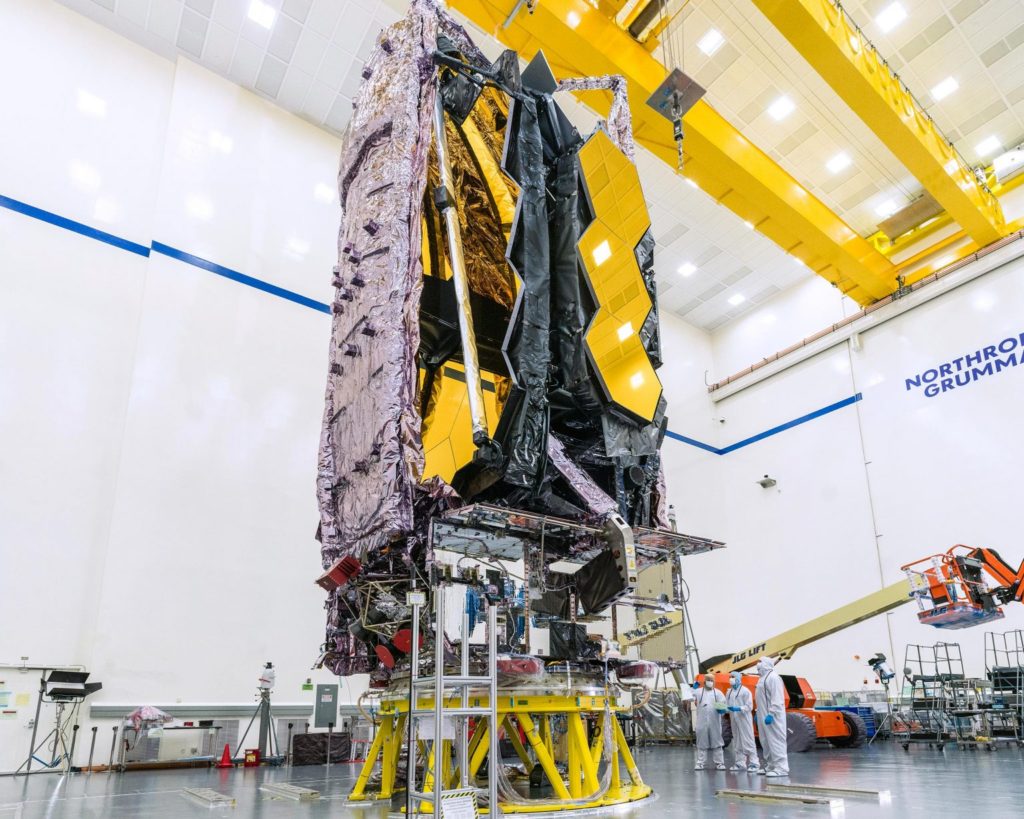“Webb arrived from California on board the MN Colibri which sailed the Panama Canal to French Guiana. The shallow Kourou river was specially dredged to ensure a clear passage and the vessel followed high tide to safely reach port.
Though the telescope weighs only six tonnes, it is more than 10.5 m high and almost 4.5 m wide when folded. It was shipped in its folded position in a 30 m long container which, with auxiliary equipment, weighs more than 70 tonnes. This is such an exceptional mission that a heavy articulated vehicle was brought on board MN Colibri to carefully transport Webb to the Spaceport.
The Spaceport’s preparation facilities are ready for Webb’s arrival. As extra protection from contamination, the clean rooms are fitted with additional walls of air filters and a dedicated curtain will shroud Webb after it is mounted on the rocket.”


Now we’re talking! Big rockets are cool, but unless they’re a means to some useful end they’re just toys. To wit: Bezos’s pogo stick. Webb on the other hand is proper science.
If you like that how about a radio telescope in a crater on the far side of the moon?
https://www.nasa.gov/directorates/spacetech/niac/2020_Phase_I_Phase_II/lunar_crater_radio_telescope/
Yes, please. A Far Side (and I don’t mean Gary Larsen) portal with a quiet view of the universe without the Earth’s noisy interference, and in other frequency ranges, will lead to breakthroughs in Cosmology and perhaps physics.
About time. Mission FRAGO since it started. We know life is out there. Plan is to see if it is enjoying freedom and destroy it.
“and destroy it.” Citation?
Everything about this one boggles the mind. The Webb telescope will not be in Earth orbit like Hubble, instead it sits out at the L2 Lagrange point using the Earth as a giant sunshade. I’ve just read that the Earth’s umbra (shadow from the sun) extends out to around 1.4M km, just before L2, so it’s not actually dark there, just cooler. Which is just what you need for infrared detectors.
The telescope will be able to detect light from much earlier than all existing space telescopes, so new scientific discoveries are pretty much guaranteed.
But what I can’t get over is how they pack a 6.5m diameter telescope, heat shield & all the rest into a lauchable package and blast the whole thing into space without destroying what is, after all, an incredibly delicate precision instrument. The article says the Ariane 5 rocket’s flight path has been modified to “..perform a specially developed rolling maneuver to ensure that all parts of the satellite will be equally exposed to the sun”. I guess this is to avoid warping the mirrors with an uneven heat distribution. Delicate.
Hats off the the guys and gals that make all this happen.
Barbara Ann
It is folded up inside the launch vehicle.
That’s another extraordinary aspect of the process – figuring out the origami required to fit it all in. And then ensuring the ballet that must ensue when the thing unpacks itself is conducted flawlessly.
I see today is an important day for the U.S. Navy. For Navy vets, happy birthday!
That is an exceptional space observatory.
Hope it makes it to position and deploys successfully.
Will be a quantum leap in many frequencies from Hubble.